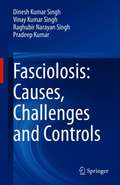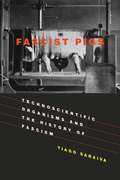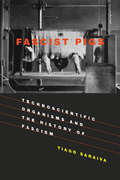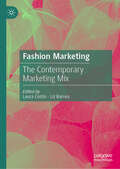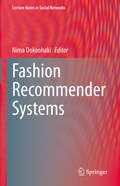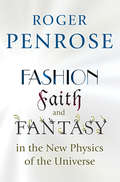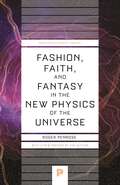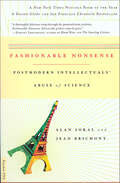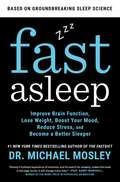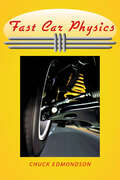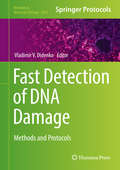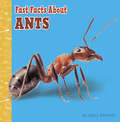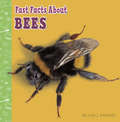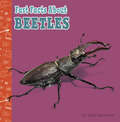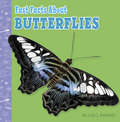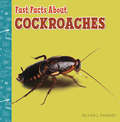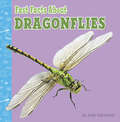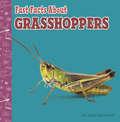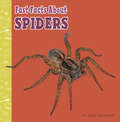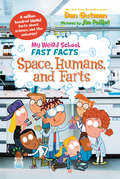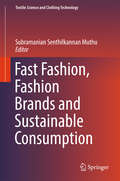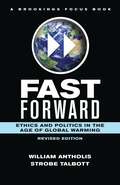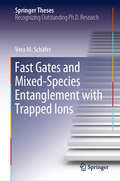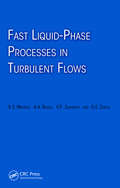- Table View
- List View
Fasciolosis: Causes, Challenges and Controls
by Pradeep Kumar Dinesh Kumar Singh Vinay Kumar Singh Raghubir Narayan SinghThis book provides an up-to-date review of fasciolosis, a disease caused by Fasciola hepatica and Fasciola gigantica, including its biology, transmission, epidemiology, host distribution, economic impact, and novel approaches for its diagnosis, treatment and prevention.It first offers a brief overview of the history of the disease, the genetic diversity of the parasite and its distribution, and the ecology of the vector snail, which belongs to the Lymnaeidae/Planorbidae family. It also examines the current strategies and novel approaches for controlling the parasite, diagnosing infections and vaccine development.Importantly, it highlights issues relating to the control of fasciolosis, including drug resistance, lack of effective diagnostics, and the parasite’s long-term survival strategies based on regulation and modulation of the host immune system. Lastly, it discusses the novel control snail vectors using bait formulations, and synergetic and phototherapy treatment with chlorophyllin, which does not kill the vector.
Fascist Pigs: Technoscientific Organisms and the History of Fascism
by Tiago SaraivaIn the fascist regimes of Mussolini's Italy, Salazar's Portugal, and Hitler's Germany, the first mass mobilizations involved wheat engineered to take advantage of chemical fertilizers, potatoes resistant to late blight, and pigs that thrived on national produce. Food independence was an early goal of fascism; indeed, as Tiago Saraiva writes in Fascist Pigs, fascists were obsessed with projects to feed the national body from the national soil. Saraiva shows how such technoscientific organisms as specially bred wheat and pigs became important elements in the institutionalization and expansion of fascist regimes. The pigs, the potatoes, and the wheat embodied fascism. In Nazi Germany, only plants and animals conforming to the new national standards would be allowed to reproduce. Pigs that didn't efficiently convert German-grown potatoes into pork and lard were eliminated.Saraiva describes national campaigns that intertwined the work of geneticists with new state bureaucracies; discusses fascist empires, considering forced labor on coffee, rubber, and cotton in Ethiopia, Mozambique, and Eastern Europe; and explores fascist genocides, following Karakul sheep from a laboratory in Germany to Eastern Europe, Libya, Ethiopia, and Angola.Saraiva's highly original account -- the first systematic study of the relation between science and fascism -- argues that the "back to the land" aspect of fascism should be understood as a modernist experiment involving geneticists and their organisms, mass propaganda, overgrown bureaucracy, and violent colonialism.
Fascist Pigs: Technoscientific Organisms and the History of Fascism (Inside Technology)
by Tiago SaraivaHow the breeding of new animals and plants was central to fascist regimes in Italy, Portugal, and Germany and to their imperial expansion. In the fascist regimes of Mussolini's Italy, Salazar's Portugal, and Hitler's Germany, the first mass mobilizations involved wheat engineered to take advantage of chemical fertilizers, potatoes resistant to late blight, and pigs that thrived on national produce. Food independence was an early goal of fascism; indeed, as Tiago Saraiva writes in Fascist Pigs, fascists were obsessed with projects to feed the national body from the national soil. Saraiva shows how such technoscientific organisms as specially bred wheat and pigs became important elements in the institutionalization and expansion of fascist regimes. The pigs, the potatoes, and the wheat embodied fascism. In Nazi Germany, only plants and animals conforming to the new national standards would be allowed to reproduce. Pigs that didn't efficiently convert German-grown potatoes into pork and lard were eliminated.Saraiva describes national campaigns that intertwined the work of geneticists with new state bureaucracies; discusses fascist empires, considering forced labor on coffee, rubber, and cotton in Ethiopia, Mozambique, and Eastern Europe; and explores fascist genocides, following Karakul sheep from a laboratory in Germany to Eastern Europe, Libya, Ethiopia, and Angola. Saraiva's highly original account—the first systematic study of the relation between science and fascism—argues that the “back to the land” aspect of fascism should be understood as a modernist experiment involving geneticists and their organisms, mass propaganda, overgrown bureaucracy, and violent colonialism.
Fashion Figures
by Melissa A. BorzaMissy Maker is a middle school girl who loves math and fashion. She sees math in everything she does. She tries to hide this from her friends, because she thinks it's too geeky. Missy hears that the school math club needs more members, but she's worried about what her friends will think if she joins, and she's already committed to joining the fashion club. After an epic internal struggle and with the support of her peers and her quirky, loving family, Missy finds that she can be both a Mathlete and a Fashionista. Missy figures out how to bring the two clubs together to help both groups win. In the process, she discovers that she can openly excel in math and science and still be popular with her peers. She also learns how her math and science skills can help her artistic endeavors. Gain an inside perspective on what it's like when you love math and science and happen to be a girl. Fashion Figures highlights the societal and internal pressures preteen and early-teen girls often face when they excel in these subjects, and it shows strategies for overcoming barriers to being themselves and doing what they love while still fitting in socially. What You'll Learn Girls can have a passion for STEM (science, technology, engineering and math) subjects and still be cool Girls can be great at math Math skills are important in non-STEM centered subject areas like fashion and art Math can be fun Who This Book Is For Pre-teen and early-teen girls (9-14 years old)
Fashion Marketing: The Contemporary Marketing Mix
by Laura Costin Liz BarnesThis book offers a comprehensive overview of key topics, debates and issues in the field of fashion marketing. The purpose of fashion marketing is to understand the needs of consumers and to orientate both strategic and operational activities to satisfy those needs. In recent times, fashion marketing has faced an era of fast-paced change characterised by the rise of fashion influencers, the impact of technology, and the complexity of consumer needs, which has never been so great. As such, there is a need to examine the concept of fashion marketing in this contemporary setting. Featuring a range of contributions from international experts in the field, the book is split into sections broadly covering fashion marketing as a concept, internationalization, digital fashion marketing, and contemporary thinking. In doing so it covers topics such as fashion social media, luxury fashion marketing, fashion marketing and the pandemic, sustainability, AI and omnichannel fashion retail. A definitive resource for students, researchers and practitioners, this book offers a truly contemporary lens that pushes the boundaries of current and future thinking.
Fashion Recommender Systems (Lecture Notes in Social Networks)
by Nima DokoohakiThis book includes the proceedings of the first workshop on Recommender Systems in Fashion 2019. It presents a state of the art view of the advancements within the field of recommendation systems with focused application to e-commerce, retail and fashion. The volume covers contributions from academic as well as industrial researchers active within this emerging new field.Recommender Systems are often used to solve different complex problems in this scenario, such as social fashion-based recommendations (outfits inspired by influencers), product recommendations, or size and fit recommendations. The impact of social networks and the influence that fashion influencers have on the choices people make for shopping is undeniable. For instance, many people use Instagram to learn about fashion trends from top influencers, which helps them to buy similar or even exact outfits from the tagged brands in the post. When traced, customers’ social behavior can be a very useful guide for online shopping websites, providing insights on the styles the customers are really interested in, and hence aiding the online shops in offering better recommendations and facilitating customers quest for outfits. Another well known difficulty with recommendation of similar items is the large quantities of clothing items which can be considered similar, but belong to different brands. Relying only on implicit customer behavioral data will not be sufficient in the coming future to distinguish between for recommendation that will lead to an item being purchased and kept, vs. a recommendation that might result in either the customer not following it, or eventually return the item. Finding the right size and fit for clothes is one of the major factors not only impacting customers purchase decision, but also their satisfaction from e-commerce fashion platforms. Moreover, fashion articles have important sizing variations. Finally, customer preferences towards perceived article size and fit for their body remain highly personal and subjective which influences the definition of the right size for each customer.The combination of the above factors leaves the customers alone to face a highly challenging problem of determining the right size and fit during their purchase journey, which in turn has resulted in having more than one third of apparel returns to be caused by not ordering the right article size. This challenge presents a huge opportunity for research in intelligent size and fit recommendation systems and machine learning solutions with direct impact on both customer satisfaction and business profitability.
Fashion, Faith, and Fantasy in the New Physics of the Universe
by Roger PenroseWhat can fashionable ideas, blind faith, or pure fantasy possibly have to do with the scientific quest to understand the universe? Surely, theoretical physicists are immune to mere trends, dogmatic beliefs, or flights of fancy? In fact, acclaimed physicist and bestselling author Roger Penrose argues that researchers working at the extreme frontiers of physics are just as susceptible to these forces as anyone else. In this provocative book, he argues that fashion, faith, and fantasy, while sometimes productive and even essential in physics, may be leading today's researchers astray in three of the field's most important areas--string theory, quantum mechanics, and cosmology.Arguing that string theory has veered away from physical reality by positing six extra hidden dimensions, Penrose cautions that the fashionable nature of a theory can cloud our judgment of its plausibility. In the case of quantum mechanics, its stunning success in explaining the atomic universe has led to an uncritical faith that it must also apply to reasonably massive objects, and Penrose responds by suggesting possible changes in quantum theory. Turning to cosmology, he argues that most of the current fantastical ideas about the origins of the universe cannot be true, but that an even wilder reality may lie behind them. Finally, Penrose describes how fashion, faith, and fantasy have ironically also shaped his own work, from twistor theory, a possible alternative to string theory that is beginning to acquire a fashionable status, to "conformal cyclic cosmology," an idea so fantastic that it could be called "conformal crazy cosmology."The result is an important critique of some of the most significant developments in physics today from one of its most eminent figures.
Fashion, Faith, and Fantasy in the New Physics of the Universe (Princeton Science Library)
by Roger PenroseNobel Prize–winning physicist Roger Penrose questions some of the most fashionable ideas in physics today, including string theoryWhat can fashionable ideas, blind faith, or pure fantasy possibly have to do with the scientific quest to understand the universe? Surely, theoretical physicists are immune to mere trends, dogmatic beliefs, or flights of fancy? In fact, acclaimed physicist and bestselling author Roger Penrose argues that researchers working at the extreme frontiers of physics are just as susceptible to these forces as anyone else. In this provocative book, he argues that fashion, faith, and fantasy, while sometimes productive and even essential in physics, may be leading today's researchers astray in three of the field's most important areas—string theory, quantum mechanics, and cosmology.Arguing that string theory has veered away from physical reality by positing six extra hidden dimensions, Penrose cautions that the fashionable nature of a theory can cloud our judgment of its plausibility. In the case of quantum mechanics, its stunning success in explaining the atomic universe has led to an uncritical faith that it must also apply to reasonably massive objects, and Penrose responds by suggesting possible changes in quantum theory. Turning to cosmology, he argues that most of the current fantastical ideas about the origins of the universe cannot be true, but that an even wilder reality may lie behind them. Finally, Penrose describes how fashion, faith, and fantasy have ironically also shaped his own work, from twistor theory, a possible alternative to string theory that is beginning to acquire a fashionable status, to "conformal cyclic cosmology," an idea so fantastic that it could be called "conformal crazy cosmology."The result is an important critique of some of the most significant developments in physics today from one of its most eminent figures.
Fashionable Nonsense: Postmodern Intellectuals' Abuse of Science
by Jean Bricmont Alan SokalIn 1996 physicist Alan Sokal published an essay in Social Text--an influential academic journal of cultural studies--touting the deep similarities between quantum gravitational theory and postmodern philosophy. Soon thereafter, the essay was revealed as a brilliant parody, a catalog of nonsense written in the cutting-edge but impenetrable lingo of postmodern theorists. The event sparked a furious debate in academic circles and made the headlines of newspapers in the U.S. and abroad.In Fashionable Nonsense: Postmodern Intellectuals' Abuse of Science, Sokal and his fellow physicist Jean Bricmont expand from where the hoax left off. In a delightfully witty and clear voice, the two thoughtfully and thoroughly dismantle the pseudo-scientific writings of some of the most fashionable French and American intellectuals. More generally, they challenge the widespread notion that scientific theories are mere "narrations" or social constructions.
Fast Asleep: Improve Brain Function, Lose Weight, Boost Your Mood, Reduce Stress, and Become a Better Sleeper
by Dr Dr Michael MosleyThe #1 New York Times bestselling author of The Clever Gut Diet and &“one of the world&’s leading journalists covering nutrition and health&” (Dr. Valter Longo, director of the University of Southern California Longevity Institute) presents a science-based sleep program designed to improve brain function, support weight loss, boost your mood, and reduce stress. Getting a good night&’s sleep is everyone&’s daily goal. After all, it reduces your risk of depression, helps you fight chronic disease, improves your memory, and it just plain feels good. Yes, but if sleep can give us all these things and more, why is it that so many of us struggle to get the necessary seven to eight hours a night? In Fast Asleep, Dr. Michael Mosley brings together the latest, groundbreaking science to explain exactly why it is so important that we regularly get enough sleep. Prone to insomnia, he has taken part in numerous sleep experiments and tested every sleep remedy. Combining personal insight and in-depth research, he explains why so many of us struggle with sleep, what works and what doesn&’t, and shares his own myth-busting program to help you achieve a good night&’s rest. Filled with fascinating case studies, fifty delicious, sleep-promoting recipes, and more Fast Asleep is a complete resource that offers a range of tools for combating fatigue and tiredness. Simple, effective, and life-changing, this book explores the science of dreaming, explains why gut health and meal times matter, and reveals tips and tricks to help you not just to sleep better, but to reduce stress levels and feel happier and healthier in general.
Fast Car Physics
by Chuck EdmondsonRevving engines, smoking tires, and high speeds. Car racing enthusiasts and race drivers alike know the thrill of competition, the push to perform better, and the agony—and dangers—of bad decisions. But driving faster and better involves more than just high horsepower and tightly tuned engines. Physicist and amateur racer Chuck Edmondson thoroughly discusses the physics underlying car racing and explains just what’s going on during any race, why, and how a driver can improve control and ultimately win.The world of motorsports is rich with excitement and competition—and physics. Edmondson applies common mathematical theories to real-world racing situations to reveal the secrets behind successful fast driving. He explains such key concepts as how to tune your car and why it matters, how to calculate 0 to 60 mph times and quarter-mile times and why they are important, and where, when, why, and how to use kinematics in road racing. He wraps it up with insight into the impact and benefit of green technologies in racing. In each case, Edmondson’s in-depth explanations and worked equations link the physics principles to qualitative racing advice.From selecting shifting points to load transfer in car control and beyond, Fast Car Physics is the ideal source to consult before buckling up and cinching down the belts on your racing harness.
Fast Detection of DNA Damage
by Vladimir V. DidenkoThis volume presents a comprehensive collection of quick assays for the detection of nuclear and mitochondrial DNA damage and its effects in live and fixed cells and tissues, and in bacterial genomes. Although, such rapid techniques are in demand in the "research trenches" they are not covered well in the literature. This volume is the first such compendium of the time-saving techniques for detection of DNA damage and its direct physiological outcomes including apoptosis, necrosis and phagocytic clearance. The volume demonstrates all levels of detection, starting from the molecular level up to the level of the entire live organism. Written in the highly successful Methods in Molecular Biology series format, chapters include introductions to their respective topics, lists of the necessary materials and reagents, step-by-step, readily reproducible laboratory protocols, and tips on troubleshooting and avoiding known pitfalls. Authoritative and cutting-edge, Fast Detection of DNA Damage: Methods and Protocols aims to provide easily reproducible techniques requiring only few steps to perform.
Fast Facts About Ants (Fast Facts About Bugs & Spiders)
by Lisa J. AmstutzSay hello to tiny but mighty ants! Young readers will get the fast facts on these hardworking insects, including ant body parts, habitats, and life cycles. Along the way, they will also uncover surprising and fascinating facts. Simple text, close-up photos, and a fun activity make this a perfect introduction to the bustling world of ants.
Fast Facts About Bees (Fast Facts About Bugs & Spiders)
by Lisa J. AmstutzWhat’s that buzz? Bees! Young readers will get the fast facts about these busy insects, including bee body parts, habitats, life cycles, and why they are important to the environment. Along the way, they will also uncover surprising and fascinating facts. Simple text, close-up photos, and a fun activity make this a perfect introduction to the humming world of bees.
Fast Facts About Beetles (Fast Facts About Bugs & Spiders)
by Julia Garstecki-DerkovitzBig or small, thin or wide, brilliantly colored or camouflaged—there are many types of beetles! Young readers will get the fast facts on these diverse insects, including beetle body parts, habitats, and life cycles. Along the way, they will also uncover surprising and fascinating facts! Simple text, close-up photos, and a fun activity make this a perfect introduction to the brilliant world of beetles.
Fast Facts About Butterflies (Fast Facts About Bugs & Spiders)
by Lisa J. AmstutzFlitter and flutter! It’s a pretty butterfly! Young readers will get the fast facts on these colorful insects, including butterfly body parts, habitats, life cycles, and why they are important to the environment. Along the way, they will also uncover surprising and fascinating facts! Simple text, close-up photos, and a fun activity make this a perfect introduction to the beautiful world of butterflies.
Fast Facts About Cockroaches (Fast Facts About Bugs & Spiders)
by Lisa J. AmstutzSkitter, skitter! A cockroach scurries by in a flash. Young readers will get the fast facts on these tough insects, including cockroach body parts, habitats, and life cycles. Along the way, they will also uncover surprising and fascinating facts! Simple text, close-up photos, and a fun activity make this a perfect introduction to the creepy-crawly world of cockroaches.
Fast Facts About Dragonflies (Fast Facts About Bugs & Spiders)
by Julia Garstecki-DerkovitzZip! Something darts through the air. It’s a dragonfly! Young readers will get the fast facts on these speedy insects, including their body parts, habitats, and life cycles. Along the way, they also will uncover surprising and fascinating facts! Simple text, close-up photos, and a fun activity make this a perfect introduction to the dazzling world of dragonflies.
Fast Facts About Grasshoppers (Fast Facts About Bugs & Spiders)
by Julia Garstecki-DerkovitzWhat’s that jumping by? Meet the grasshopper! Young readers will get the fast facts on these long-legged insects as they learn about grasshopper body parts, habitats, and life cycles. Along the way, they will also uncover surprising and fascinating facts! Simple text, close-up photos, and a fun activity make this a perfect introduction to the hopping world of grasshoppers.
Fast Facts About Spiders (Fast Facts About Bugs & Spiders)
by Julia Garstecki-DerkovitzDo you spy a silky web? A spider must be nearby! Young readers will get the fast facts on these eight-legged critters, including spider body parts, habitats, and life cycles. Along the way, they will also uncover surprising and fascinating facts! Simple text, close-up photos, and a fun activity make this a perfect introduction to the spectacular world of spiders.
Fast Facts: Space, Humans, and Farts (My Weird School )
by Dan Gutman Jim Paillot<P>Think fast with A.J. and Andrea from My Weird School!Did you know that the planet Jupiter has at least fifty moons? Did you know that Albert Einstein’s brain was stolen after he died?! <P>Learn more weird-but-true science facts with A.J. and Andrea from Dan Gutman’s bestselling My Weird School series. <P>This all-new series of nonfiction books features hundreds of hysterical facts, plus lots of photos and illustrations. <P>Whether you’re a kid who wants to learn more about science or simply someone who wants to know how many million times the earth could fit into the sun, this is the book for you! <P>With more than 11 million books sold, the My Weird School series really gets kids reading!
Fast Fashion, Fashion Brands and Sustainable Consumption (Textile Science and Clothing Technology)
by Subramanian Senthilkannan MuthuThis book discusses the connection between fast fashion brands and customer-centric sustainability. It highlights what consumers can do with fast fashion and the important aspects that need to be addressed to make fast fashion sustainable. Fast fashion is an inevitable element in today’s fashion business cycle and its adverse impacts on sustainable fashion are a major issue.
Fast Forward
by Strobe Talbott William AntholisFast Forward is equal parts science primer, history lesson, policy prescription, and ethical treatise. This pithy and compelling book makes clear what we know and don't know about global warming; why the threat demands prudent and urgent action; why the transition to a low-carbon economy will be the most difficult political and economic transaction in history; and how it requires nothing less than a revolution in our sense of civic responsibility. William Antholis and Strobe Talbott guide the reader through two decades of climate change politics and diplomacy, explaining the national and international factors that have influenced and often impeded domestic climate legislation and global negotiations. Recent United Nations-sponsored summits have demonstrated that the world cannot wait for a binding global treaty. Instead, the authors believe that the "Big Four" of America, the European Union, China, and India must lead the way forward. They recommend a new international mechanism modeled on the General Agreement on Tariffs and Trade that would monitor national commitments and create incentives for other countries to coordinate their efforts to cut emissions.Antholis and Talbott put their recommendations for legislative and diplomatic action into the larger context of our obligation to future generations, echoing a theme stressed by a diverse coalition of religious leaders calling for ambitious action on climate change. The world we leave to our children and grandchildren is not an abstraction, or even just a legacy; we must think about what kind of world that will be in deciding how we live-and act-today.
Fast Gates and Mixed-Species Entanglement with Trapped Ions (Springer Theses)
by Vera M. SchäferQuantum logic gates are the crucial information-processing operation of quantumcomputers. Two crucial performance metrics for logic gates are their precision andspeed. Quantum processors based on trapped ions have always been the touchstonefor gate precision, but have suffered from slow speed relative to other quantum logicplatforms such as solid state systems. This thesis shows that it is possible to acceleratethe logic "clock speed" from kHz to MHz speeds, whilst maintaining a precision of99.8%. This is almost as high as the world record for conventional trapped-ion gates,but more than 20 times faster. It also demonstrates entanglement generation in atime (480ns) shorter than the natural timescale of the ions' motion in the trap, whichstarts to probe an interesting new regime of ion trap physics.In separate experiments, some of the first "mixed-species" quantum logic gates areperformed, both between two different elements, and between different isotopes.The mixed-isotope gate is used to make the first test of the quantum-mechanical Bellinequality between two different species of isolated atoms.
Fast Liquid-Phase Processes in Turbulent Flows
by Gennady Zaikov Karl Minsker Alexander Berlin Vadim ZakharovThis book deals with the fundamental laws of passing of fast liquid-phase chemical as well as heat and mass transfer processes in turbulent flows. The fundamental laws of passing of fast liquid-phase chemical and also heat and mass transfer processes in turbulent flows are considered in the book. Development of a macrokinetics approach is generaliz
